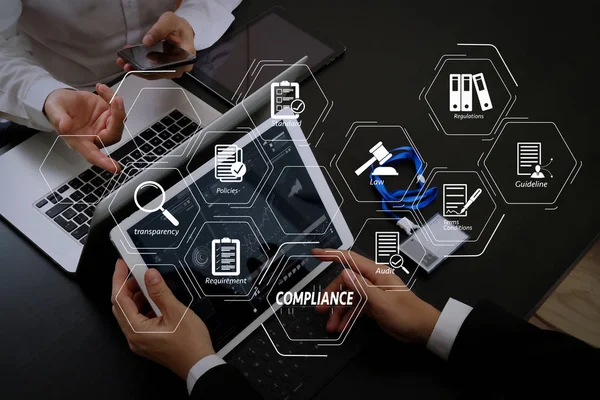In regulated industries such as healthcare, finance, and manufacturing, maintaining IT compliance is not just a best practice; it’s a legal requirement. Non-compliance can lead to severe consequences, including hefty fines, legal repercussions, and damage to reputation. IT services play a crucial role in helping organizations navigate the complexities of compliance regulations. Here’s how IT services can support businesses in maintaining IT compliance in regulated industries.

1. Understanding Regulatory Requirements
IT compliance begins with a thorough understanding of the applicable regulations, such as HIPAA, GDPR, PCI-DSS, or SOX. IT services can provide expertise in identifying which regulations apply to your organization and how to interpret them. This foundational knowledge is critical for ensuring compliance and developing a strategy that aligns with regulatory requirements.
2. Risk Assessment and Management
Conducting a risk assessment is essential for identifying potential vulnerabilities that could lead to non-compliance. IT services can perform comprehensive risk assessments, evaluating IT systems, processes, and data management practices. By identifying and addressing these risks proactively, organizations can minimize their exposure to compliance violations.
3. Implementing Security Controls
Regulatory frameworks often require specific security measures to protect sensitive data. IT services can help organizations implement robust security controls, including firewalls, encryption, access controls, and intrusion detection systems. These security measures not only protect sensitive information but also demonstrate compliance with regulatory requirements.
4. Developing and Enforcing Policies
Compliance requires well-defined policies and procedures that govern data management and IT practices. IT services can assist in creating comprehensive IT policies that outline roles, responsibilities, and acceptable use of technology. Furthermore, they can help organizations enforce these policies through regular training and awareness programs for employees.
5. Continuous Monitoring and Auditing
Maintaining compliance is an ongoing process that requires continuous monitoring of systems and processes. IT services can implement monitoring tools that track compliance with established policies and regulations in real time. Regular audits and assessments ensure that organizations remain compliant and can identify areas for improvement.
6. Data Management and Protection
Data management is a critical aspect of compliance, especially in regulated industries. IT services can help organizations implement best practices for data handling, storage, and disposal. This includes data classification, access controls, and secure data sharing practices that comply with regulatory standards.
7. Incident Response Planning
In the event of a data breach or security incident, having a well-defined incident response plan is essential for mitigating the impact and ensuring compliance. IT services can assist organizations in developing and testing incident response plans that outline steps to take in the event of a breach, including communication protocols and regulatory reporting requirements.
8. Training and Awareness Programs
Employee training is crucial for fostering a culture of compliance within the organization. IT services can develop and implement training programs that educate employees about regulatory requirements, security best practices, and the importance of compliance. Regular training ensures that employees are aware of their responsibilities and how to protect sensitive information.
9. Vendor Management and Third-Party Compliance
Many organizations rely on third-party vendors for various IT services, which can introduce compliance risks. IT services can assist in evaluating vendors for their compliance with relevant regulations and help establish vendor management policies that ensure third-party compliance. This includes conducting regular assessments and requiring vendors to adhere to the same compliance standards.
10. Documentation and Reporting
Accurate documentation is essential for demonstrating compliance during audits and regulatory inspections. IT services can help organizations maintain comprehensive records of their compliance efforts, including risk assessments, policy documents, training materials, and audit findings. This documentation serves as evidence of compliance and helps organizations respond effectively to regulatory inquiries.
Conclusion
Maintaining IT compliance in regulated industries is a complex and ongoing challenge that requires a strategic approach. IT services play a vital role in helping organizations navigate this landscape by providing expertise, implementing best practices, and ensuring continuous monitoring and improvement. By leveraging IT services, businesses can not only achieve compliance but also enhance their overall security posture and build trust with customers and stakeholders.


No responses yet